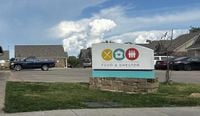As federal policymakers in Washington push through sweeping cuts to the Supplemental Nutrition Assistance Program (SNAP), communities across the United States are bracing for a wave of hardship that could leave millions struggling to afford their next meal. The recently passed One Big Beautiful Bill Act (OBBBA) is set to slash $186 billion from SNAP over the next decade, a move that will ripple through states like Michigan and Oklahoma—where food insecurity rates already outpace the national average—and threaten the well-being of families, students, and seniors alike.
In Michigan’s Washtenaw County, the news has landed like a thunderclap. According to Food Gatherers, a major Ann Arbor-based food bank, roughly 8.9% of the county’s 373,875 residents—about 33,275 people—depend on SNAP to put food on the table. The stakes are even higher when you consider that 14% of county residents are food insecure, as reported by Food Gatherers’ executive director Eileen Spring. "Our community has built up this really strong safety net, and we have been very agile and strategic," Spring told local media. "But the federal government is sort of this leg of a stool that has been cut off without any planning or notice or explanation."
Spring’s organization, which serves 60,000 people annually through 140 partner agencies, has already been hit hard by the United States Department of Agriculture (USDA) halting a reliable food supply earlier this year. The loss? A staggering 1.5 million pounds of food—equivalent to 1.2 million meals, valued at $2.5 million. "USDA food had been 30% of our total distribution, so we were already compromised," Spring explained.
Now, with the OBBBA’s deep cuts on the horizon, the pressure on local food banks is mounting. Markell Miller, Food Gatherers’ director of community food programs, put it bluntly: "For every meal that a food bank provides, like Food Gatherers, SNAP is providing nine meals to that community. So even a small cut to SNAP benefits has a huge impact locally." Miller worries that as SNAP benefits shrink, more people will turn to food pantries, stretching the charitable system thin.
The OBBBA isn’t just about reducing funding; it also introduces new hurdles for those seeking help. For the first time, adults aged 55-64 and parents of school-aged children 14 and older will be subject to a three-month time limit on SNAP benefits within a 36-month period—unless they meet strict work requirements or qualify for exemptions. "If someone is a single parent and they have a 15-year-old, they’re subject to the time limit," Miller said. Administrative errors, paperwork complications, and the challenge of proving work status could easily lead to people losing benefits, she warned.
Historically, SNAP has been funded entirely by the federal government, but that’s changing too. States will now be required to contribute, a move that Miller believes could result in further benefit losses: "People are projecting that this will result in a loss of benefits, because many, if not all, states won’t be in a position to contribute to funding the benefits." On top of that, future updates to the Thrifty Food Plan—the formula that determines SNAP benefit amounts—will be frozen, leaving no room for adjustments as food prices rise.
Despite these setbacks, local governments are trying to fill the gap. The Washtenaw County Board of Commissioners recently approved $500,000 to help Food Gatherers maintain service levels for older adults. Spring says the organization is committed to distributing another 10 million pounds of food this year, crediting community generosity and engagement for their resilience: "We fed people when we had a crisis during the pandemic because of the strength and commitment of people who are generous and engaged. And our community is just going to have to do it again."
At Eastern Michigan University, the impact of federal cuts is already being felt. Swoop’s Food Pantry, which serves roughly one in eight students, is bracing for increased demand as financial aid programs like the Pell Grant and federal work-study face significant reductions. Graduate assistant Colton Ray noted, "Federal work-study pays for many student positions at Swoop’s Food Pantry and across campus. The proposed cut – 80% starting in the 2026-2027 academic year – means work-study will be significantly less funded compared to what it has been historically." These jobs not only provide income, but also help students meet SNAP’s work requirements. Ray worries that more students will have to work longer hours just to afford basic needs, putting their education at risk.
Food insecurity isn’t just a Michigan problem. In Oklahoma, more than 15% of households are food insecure—well above the national average of 13.5%, according to USDA data. The state is set to lose nearly 40% of its federal SNAP funding, totaling $628 million, as a result of the OBBBA. That’s America’s ninth-highest relative reduction, according to The Commonwealth Fund. The new law will also require Oklahoma to share in SNAP’s costs for the first time, with future contributions tied to the state’s eligibility and benefit determination error rates.
For Oklahomans like John Cleator and Ashley Buck, SNAP and food pantries are lifelines. Cleator, who became disabled after a workplace accident, relies on Social Security and food assistance to get by. Buck, a caregiver for her husband and mother of two, said, "Consistent access to affordable, quality food — it’s not something we’ve ever experienced as a family." She added, "We will likely be dead — that’s the God-honest truth," when asked about the prospect of losing SNAP benefits while still facing medical bills.
The challenges are even more acute in rural Oklahoma, where, as April Doshier of Food and Shelter in Norman explained, "Places like Norman, where two or three good-sized food pantries can step in, we can help ease that burden on folks that no longer qualify for food stamps. But in rural Oklahoma, where there are no services and no support, those folks will starve." Eddie Bennett of Connections Food and Resource Center in Weatherford echoed the concern, noting that the center’s Senior Servings Program, which delivers meals to older adults, is now at risk due to federal cuts.
The numbers tell a stark story: One in four Oklahoma children faces hunger, and nearly half of SNAP households have children. Doshier says, "People always talk about, ‘What can we do for children and protecting children?’ But helping parents be stable is the best way you can help children be safe and stable."
Kate Bauer, associate professor at the University of Michigan School of Public Health, summed up the urgency: "We know that SNAP is one of the most effective strategies to reduce poverty and to make sure that kids have food." She worries that new work requirements will only increase hardship, not employment, and that the loss of SNAP dollars will hurt local economies, farmers, and grocery stores alike. "Every dollar of SNAP brings in $1.50 of economic activity in our county," Bauer said.
As communities prepare for an uncertain future, the message from food banks, pantries, and advocates is clear: the time to act is now. Whether through local government support, charitable donations, or grassroots organizing, resilience will be tested—but so too will the nation’s commitment to its most vulnerable.

